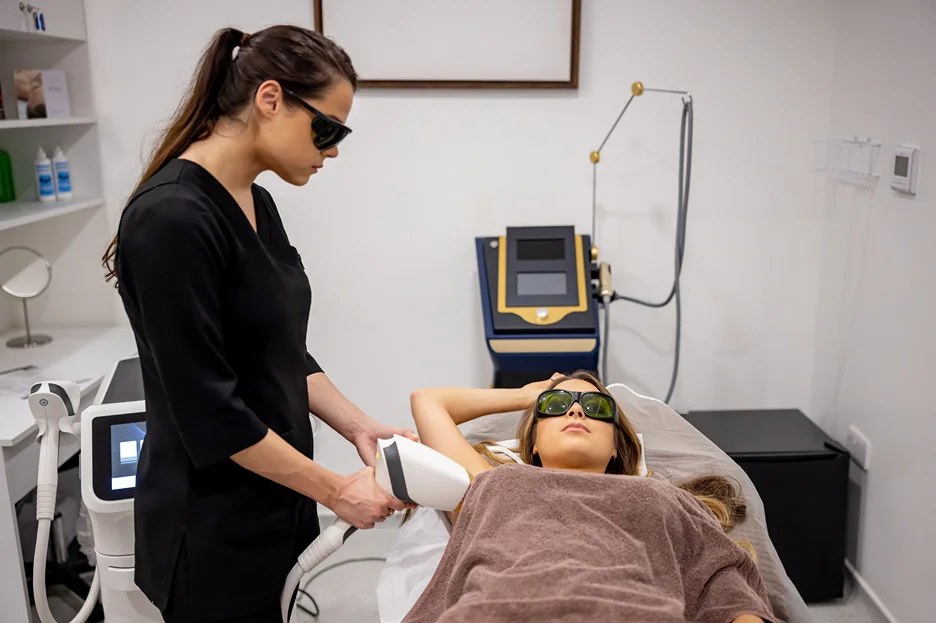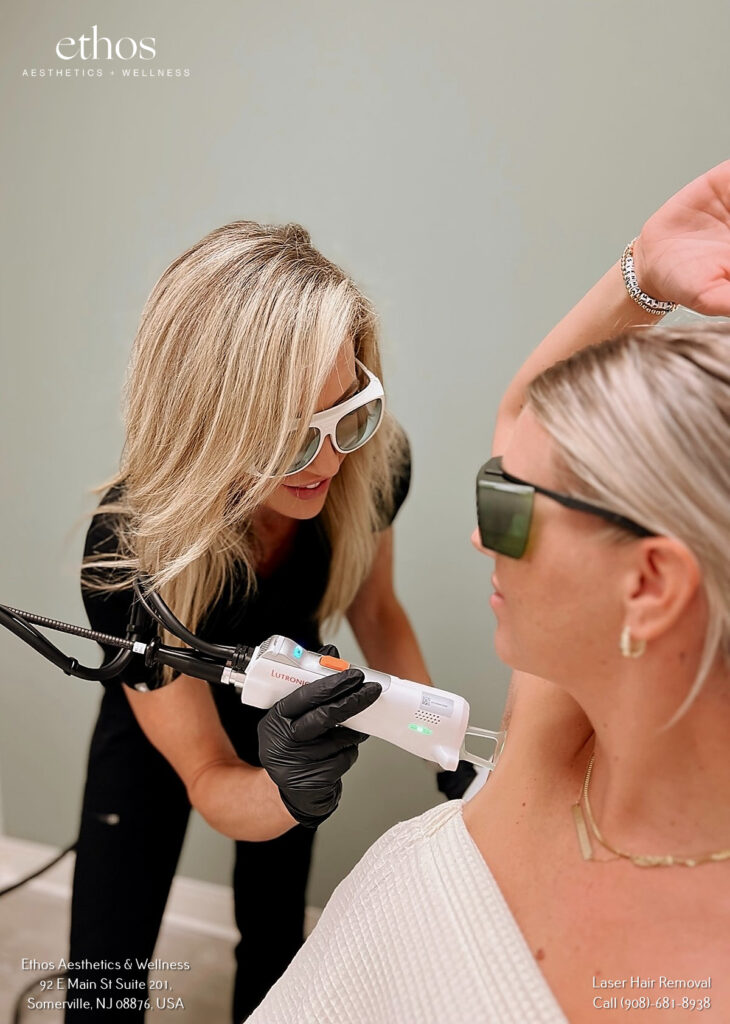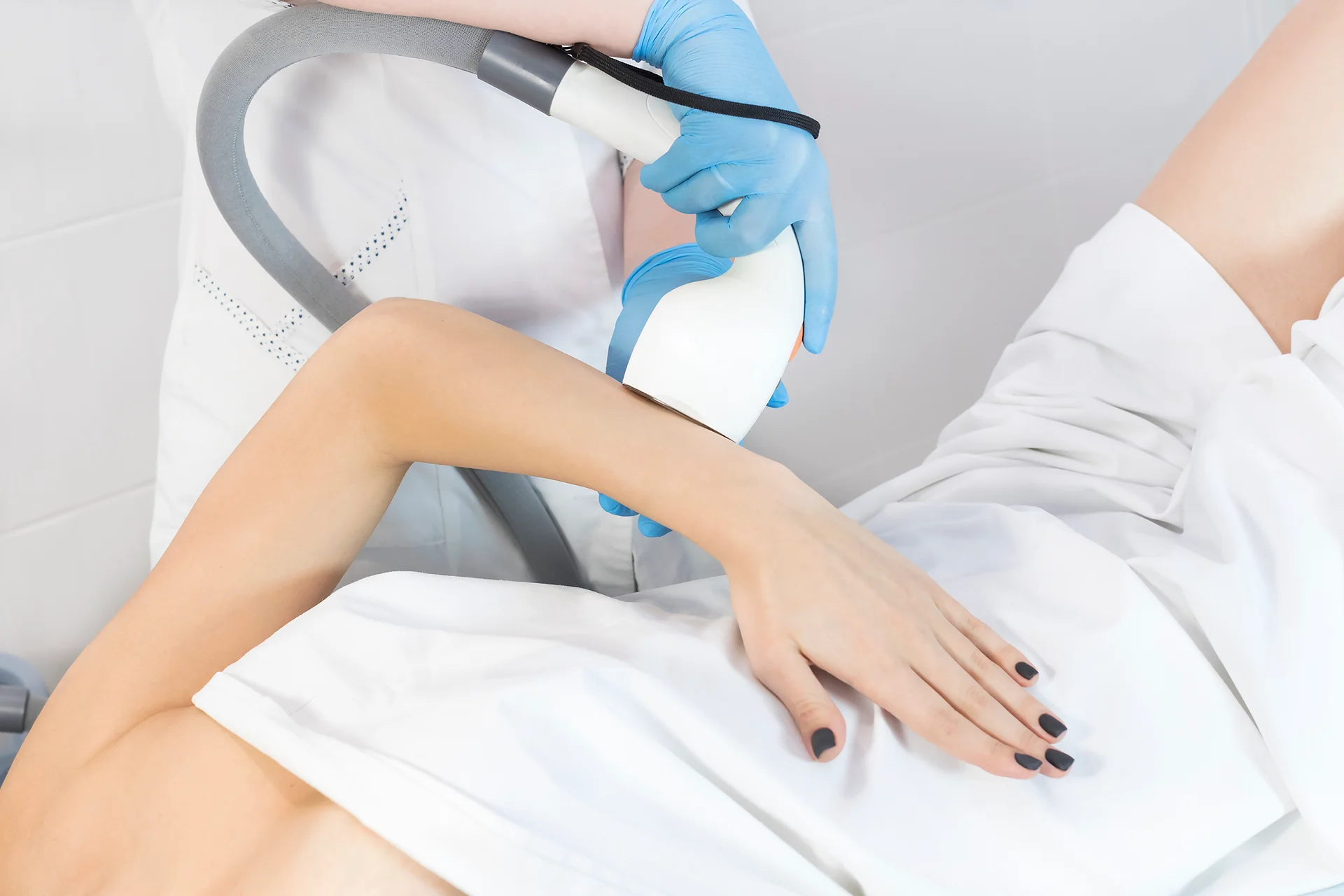What Causes Folliculitis After Laser Hair Removal?
Laser hair removal is a popular cosmetic procedure offered by Ethos Aesthetics + Wellness, known for its effectiveness in reducing unwanted hair.
However, one potential side effect is folliculitis, a condition characterized by inflamed hair follicles. This can occur due to various reasons, such as bacterial infection, skin irritation from the laser treatment, or ingrown hairs resulting from the procedure.
Understanding the causes of folliculitis is crucial in preventing and treating it effectively.
Preventive Measures for Folliculitis Post-Laser Treatment

Pre-Treatment Care
- Skin Cleansing: Gently clean the area to be treated before the procedure.
- Avoid Sun Exposure: Minimize sun exposure to reduce skin sensitivity.
- Inform Your Technician: Discuss any skin conditions with your technician.
Post-Treatment Care
- Gentle Skin Care: Use mild cleansers and avoid harsh scrubbing.
- Avoid Tight Clothing: Wear loose clothing to prevent friction on the treated area.
- Cool Compresses: Apply cool compresses to soothe irritated skin.
When to Seek Medical Attention
If symptoms of folliculitis, such as redness, swelling, or pus-filled bumps, persist or worsen, it’s important to seek medical attention. Early intervention can prevent complications and ensure proper healing.
Treatment and Recovery from Folliculitis After Laser Hair Removal
Effective Treatments for Folliculitis
After identifying folliculitis post-laser hair removal, several treatment options can be considered. These treatments aim to reduce inflammation, prevent infection, and facilitate healing.
- Topical Antibiotics: To combat bacterial infection.
- Steroid Creams: To reduce inflammation and itching.
- Warm Compresses: To soothe the area and promote healing.
- Over-the-Counter Pain Relievers: For pain management.
Table: Common Treatments and Their Benefits
| Treatment | Benefits |
| Topical Antibiotics | Treats bacterial infection |
| Steroid Creams | Reduces inflammation and itching |
| Warm Compresses | Soothes skin and promotes healing |
| Pain Relievers | Manages discomfort and pain |
Recovery Tips for Optimal Healing
- Hygiene: Maintain cleanliness in the affected area.
- Moisturize: Use a gentle, non-comedogenic moisturizer.
- Avoid Shaving: Prevent further irritation in the area.
- Loose Clothing: To reduce friction on the affected skin.
Long-Term Care and Prevention
To prevent recurrence, it’s important to adhere to recommended pre- and post-laser hair removal care guidelines. Regular skin assessments and consultations with skincare professionals at Ethos Aesthetics + Wellness can also be beneficial.
Understanding the Risk Factors and Long-Term Outlook

Identifying Risk Factors for Folliculitis
Certain factors can increase the likelihood of developing folliculitis after laser hair removal. These include:
- Skin Type: Sensitive skin types are more prone.
- Pre-Existing Skin Conditions: Such as eczema or dermatitis.
- Improper Aftercare: Not following post-treatment guidelines.
Mitigating Risks
- Personalized Treatment Plans: At Ethos Aesthetics + Wellness, treatments are tailored to individual skin types and conditions.
- Professional Guidance: Skincare experts provide comprehensive aftercare instructions.
Long-Term Outlook for Patients with Folliculitis
The prognosis for folliculitis after laser hair removal is generally positive. Most cases resolve with proper treatment and care. Continuing with personalized skincare routines and regular check-ups can help maintain healthy skin.
FAQ About folliculitis after laser hair removal
What is folliculitis after laser hair removal?
Folliculitis after laser hair removal is a skin condition characterized by the inflammation of hair follicles. It often occurs as a side effect of the laser treatment.
When the hair follicles become inflamed, it can lead to redness, itching, and small pimple-like bumps on the treated area. This condition can be uncomfortable but is usually temporary and treatable.
What causes skin irritation post-laser hair removal?
Skin irritation after laser hair removal can be caused by several factors. The laser treatment itself can cause temporary redness and swelling.
Additionally, improper aftercare, such as not keeping the treated area clean or exposing it to direct sunlight, can exacerbate skin irritation. It’s essential to follow post-treatment care instructions to minimize irritation.
How can I treat follicular infections after laser hair removal?
If you suspect a follicular infection after laser hair removal, it’s crucial to consult a dermatologist. They can prescribe antibiotics or topical treatments to address the infection.
To prevent such infections, maintaining proper hygiene and following aftercare instructions is essential.
What are the complications of laser hair removal?
Complications of laser hair removal can include skin irritation, folliculitis, pigment changes, and in rare cases, scarring. It’s essential to choose a qualified practitioner and follow their guidance to minimize the risk of complications.
What should I do for aftercare after laser hair removal?
Aftercare is crucial to ensure the best results and minimize side effects of laser hair removal. It may include keeping the treated area clean, avoiding sun exposure, using gentle skincare products, and moisturizing regularly.
Following your practitioner’s aftercare recommendations is essential for a successful outcome.







